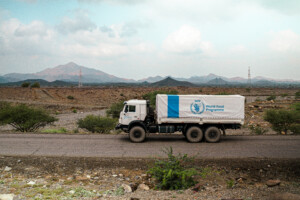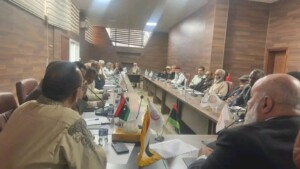Sudan OCHA bulletin 1: Displaced in Jebel Marra need winter supplies
Sudan OCHA bulletin 1: Displaced in Jebel Marra need winter supplies
Winter supplies for Jebel Marra displaced
Many internally displaced people who fled their homes in Jebel Marra in 2016 and are currently taking refuge in various locations in Central Darfur State need winter supplies, according to the national NGOs Labena and Sanad Charity Foundation (SCF). With temperatures dropping to 7-8 degrees Celsius or lower at night, many Jebel Marra displaced need appropriate shelter and winter household supplies— including blankets and warm clothes—as they left their homes with almost nothing, the two NGOs report according to the United Nations Office for the Coordination of Humanitarian Affairs (OCHA).
The displaced people also reportedly said they need fuel for heating and cooking, as firewood collection outside camps in some areas poses protection risks. The international NGO Norwegian Church Aid (NCA) is carrying out assessments in camps and gathering areas in Zalingei, Nierteti and Guldo.
According to Sudan's Humanitarian Aid Commission (HAC) in Central Darfur, there are an estimated 10,000 displaced people from Jebel Marra in Golo and 4,200 displaced people from Jebel Marra in Fanga Suk. HAC and humanitarian partners estimate there are 10,500 Jebel Marra residents in Guldo.
80,000+ displaced
The most recent Jebel Marra Crisis Fact Sheet produced by OCHA based on information from partners indicates that in 2016 more than 80,000 people were reportedly displaced in the Central Darfur area of Jebel Marra. The majority have not yet been veified.
Meanwhile aid organisations have already provided 5,000 families (25,000 people) in Fanga Suk and 3,000 families (15,000 people) in Nierteti with emergency shelter and household supplies following verification by the Sudanese Red Crescent Society (SRCS).
12,000 returnees in Baashim need more aid
Following a request made by local authorities in North Darfur’s Kutum locality and the Wali of North Darfur State, the UN Office for the Coordination of Humanitarian Affairs (OCHA) led an inter-agency mission to the Baashim/Tima area (65 km northwest of Mellit town). According to community leaders, security has been stable since the deployment of government security forces in the area in September 2016, after which people started returning.
These people reportedly fled the area in late March 2014 following an attack on the village. The total population of the area—which consists of approximately 70 villages— was around 35,000 people before the 2014 attack, according to community leaders. Findings of the mission identified that the Baashim area is in need of recovery and development assistance.
Displaced request support to return to Khor Abeche
On 8 January, a group of displaced community leaders from Khor Abeche in South Darfur arrived in Nyala to discuss with humanitarian organisations the voluntary return of 3,000 displaced people currently taking refuge near the United Nations – African Union Mission in Darfur (UNAMID) team site and in Karamje village.
Community leaders are urging the humanitarian community and government authorities to promote durable solutions and support returns to Khor Abeche town.
MoU on cross-border humanitarian aid extended
On 5 January, Sudan and South Sudan signed a memorandum of understanding (MoU) extending the agreement on the delivery of international humanitarian assistance to South Sudan through Sudan for another six months. The initial agreement was signed in July 2014, with the aim of opening a humanitarian corridor to deliver food assistance to vulnerable South Sudanese via the Nile River or by road. This cross-border operation has allowed WFP Sudan to deliver emergency and nutrition assistance to South Sudanese in Upper Nile State.
Meanwhile, South Sudanese refugees continue to arrive in Sudan fleeing fighting and hunger in their country. Since mid-December 2013, 263,245 refugees have arrived in Sudan as of 15 November, according to UNHCR. Refugees have taken refuge in White Nile (109,996), Khartoum (35,707), West Kordofan (26,386), South Kordofan (21,735), North Kordofan (1,689), Blue Nile (3,661), East Darfur (55,957), and South Darfur (5,430), North Darfur (2,684) states.
Sudan health sector funding decline since 2011
As of the end of 2016, the health sector requirements for the year were only 44 per cent ($29.3 million) funded against the 2016 Sudan Humanitarian Response Plan that appealed for $952 million.
In a recent statement by the World Health Organization (WHO), the lack of funding is forcing humanitarian organisations to either hand over or close down their health facilities in some parts of Sudan.
Difficulties in accessing health care
In North, South and West Darfur, Blue Nile and South Kordofan states, 11 clinics have already closed and 49 are at risk of closure, according to the WHO statement. According to WHO, lack of funding puts 769,000 people—including displaced and host communities—in these states at risk of facing significant difficulties in accessing primary health care services.











 and then
and then